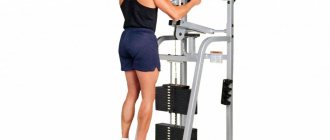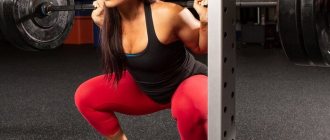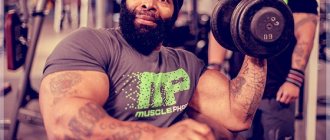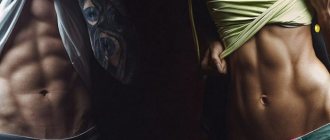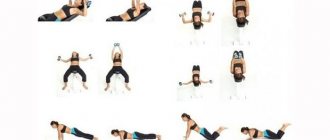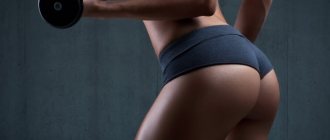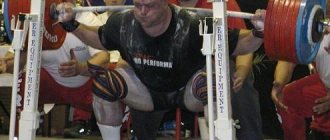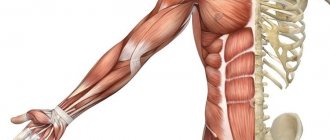The following world records have been recorded in barbell squats:
- in 2008, an Israeli who emigrated from Chechnya, Vladislav Alkhazov, wearing powerlifting equipment, set a world record in squats with a barbell weighing 567 kg on his shoulders;
- in 2010, Muscovite Andrei Malanivich set a record in banded squats with a barbell weighing 450 kg;
- The world record in equipment according to the IPF version in the squat with a barbell weighing 457.5 kg was set by Sheina Hamman, and according to the IPF version without equipment in the squat with a barbell weighing 430 kg - Mark Henry. Weightlifter Paul Anderson, who after retiring from professional sports took up powerlifting in the USA, set 2 records that no one was able to surpass;
- In triathlon (barbell squat, bench press, and deadlift) he showed an unsurpassed result of 1199 kg. With numerous attempts to get closer to this record, G. Heisey achieved the best result of 1148 kg.
- The Guinness Book records the record of Paul Anderson, who tore off safes weighing 2844 kg from the racks with his shoulders without tools. Anderson performed a squat with 2 safes filled with metal dollars, inviting anyone who wanted to take all the dollars from the safes, repeating his record. But there were no such people willing.
The world record for the number of squats per day without a barbell was first set by an athlete from the USA, Bill Evans (103 thousand squats). Currently, the achievement of the Brazilian Edmar Freitas, who performed 111 thousand squats in one day with breaks of 5 minutes every 4 hours, is presented for inclusion in the Guinness Book.
| Squats | |
| Classification | |
| Type | Basic |
| Biomechanics | Multi-joint |
| Direction | Pressing |
| Working muscles | |
| Target | Quadriceps |
| Synergists | Gluteus maximus Hip adductor Soleus |
| Stabilizers | Back extensors |
| Stabilizers-antagonists | Rectus abdominis Obliques |
| Dynamic stabilizers | Hamstrings Calfs |
| Media files on Wikimedia Commons | |
Squats
- one of the basic strength exercises (including in powerlifting and bodybuilding); the person performing the exercise squats and then stands up, returning to a standing position. Squats are considered one of the most important exercises not only in strength sports, but also in general physical training, and are also used as an auxiliary exercise in the process of training athletes in almost all sports disciplines.
Overall effect of the exercise [ edit | edit code]
Squats, along with deadlifts, create the best conditions for gaining strength and muscle mass throughout the body. In addition, they are used as a general strengthening and rehabilitation exercise.
Since during squats, a significant part of the load falls on the synergistic muscles - the abs and buttocks, this creates conditions for the rapid development of the gluteal muscles and visually increases the waist of athletes. In bodybuilding, such muscle development is considered unbalanced, so professional bodybuilders more often use exercises such as leg extensions and leg presses to pump up their legs. [1]
Working muscles [edit | edit code]
Squats are one of the most effective strength exercises for gaining muscle mass. The movement is multi-joint, affecting a large number of large and small muscles. Almost all the muscles of the lower body are included in the work. Different movement options shift the emphasis of the load on different muscle groups. Classic squats with a barbell on the shoulders primarily involve the quadriceps; synergists (muscles that help in movement) are the gluteus maximus muscles, the adductor muscles of the thigh, and the soleus muscles. The stabilizers are the hamstrings and the calf muscles. The load also falls on the abdominal muscles, back extensors and some other small muscles of the legs and torso [2].
Squats and age[edit | edit code]
Due to the powerful effects squats have on the body, older athletes take extra precautions. Warm-up, frequency of exercise and compliance with safety precautions are of particular importance for them. Research shows that doing squats in old age brings no less benefits to the body than in young people, and with the right course of recovery, recovery from injuries occurs in approximately the same time [3]. In powerlifting, competitions between veterans are regularly held (both in triathlon and separately in squats).
Rehabilitation effect [edit | edit code]
Squats have a general strengthening and rehabilitative effect on the muscles of the entire lower body. As studies by the American Institute of Sports Medicine have shown, they strengthen not only the muscles, but also the knee tendons [4]. Another advantage of squats is that it is a multi-joint exercise in which the movements of the hip, knee and ankle joints must be coordinated, which increases the stability of the brain-muscle connections.
Injury hazard [edit | edit code]
If safety rules are not followed, warming up is insufficient, or performed with a loose technique, squats, especially with heavy weights, are a dangerous exercise that has a negative impact on the athlete’s knee joints and spine. Some studies from the mid-20th century also indicate that squats strain the knee tendons [5], which is why they were excluded from the physical training program of some US Army units [6]. However, more recent studies by the University of Alabama and other organizations found no negative effects of the squat on the knee joints (when performed correctly) in either amateur or professional powerlifters [7].
Back squat records
Typically, you can lift slightly less weight with a squat than with a deadlift (more with special equipment). Squat records are recorded by various powerlifting organizations. Due to the fact that the rules regarding squat technique and doping differ in different versions, the squat records also differ from each other. The absolute world record in the equipment version (IPA) belongs to the Israeli athlete Vlad Alkhazov and is 567 kg; in the IPF - the only federation recognized by the sports committees of most states and negotiating with the IOC on the inclusion of powerlifting in the program of the Summer Olympic Games - the absolute record in squats is 457.5 kg. and belongs to the American Shane Hamman;
On October 17, 2021, Ray Williams set a new raw squat record of 456 kg.
Execution technique [edit | edit code]
Biomechanics [edit | edit code]
When performing squats, you can vary the position of your feet, but it is usually recommended to place your toes apart and your feet approximately shoulder-width apart [8]. The grip of the bar must be done with the whole hand; it cannot be held with just fingers or pressed with the palm of your hand to your shoulders. The back should be kept straight, not rounded (keep the lower back “boat”), the body should not be tilted forward too much; To help keep your back straight, it is recommended to look straight ahead or slightly upward [9] . The toes should be slightly turned out to the sides so that the knees and toes point strictly in the same direction, preventing excessive stress on the ligaments of the knee joints [10], that is, when standing up, one should not move the knees too much inward or spread them outward. The soles of the feet should not come off the floor, which is observed in novice athletes. In the initial phase of the exercise, inhale, and in the final phase, exhale.
To reduce the overturning moment, some professional athletes use a wide stance and/or a low barbell position on the shoulders, closer to the rear deltoid [10].
Equipment [edit | edit code]
When working with heavy weights, special equipment is used: a belt, elastic bandages on the knees; sometimes bandages are also wrapped around the wrist joint to improve fixation of the barbell. When using bands, it is important to calculate the speed of the downward movement, so that the elasticity of the bands helps to “push” the barbell upward, but does not put excessive stress on the spine. Professional powerlifters also use special overalls for squats, which together with bandages (the overalls are practically not used separately, unlike bandages) can significantly improve the result.
If the barbell causes severe discomfort during an exercise and puts pressure in the neck area, you can place a towel to avoid damage to the skin and reduce discomfort.
Security measures [edit | edit code]
Since the athlete can work with a lot of weight in squats, safety precautions when performing them require strict adherence. The main danger is back and knee injuries. The basic rule to avoid back injuries is to squat with a straight back. One of the main reasons is that they lift the buttocks faster than the chest. [11] When “rounding” the back, too much stress is placed on the spine (especially in its lower part) [12] . It is recommended to keep the feet in line with the knees, which avoids torque in the joints [13]. Sometimes there is an increased risk of injury in deep squats (the hip joint drops below the knee joint), but studies have shown [14] that knee injuries during deep squats only occur if the correct technique is not observed (in particular, with a high speed of lowering the projectile) and the relative weakness of the muscles involved in move.
The possibility of chronic injury from Smith machine squats due to the unnatural trajectory of the movement has sometimes been noted [15], but this point of view does not find support in academic circles.
Squat technique with a barbell on the shoulders (video)
Squats. Peculiarities
- Stand facing the bar between the racks of a power rack. Stand with the bar resting on your trapezius muscles.
- Grab the bar with an overhand grip slightly wider than shoulder-width apart and stand straight up.
- Starting position: Step back a little with the barbell. Place your feet shoulder-width apart and point your toes slightly to the sides. The back and legs are straight. The weight of the barbell is completely equally distributed on both legs.
- Take a deep breath and, holding your breath, slowly lower down. The knees bend and move forward slightly, the buttocks move back and down, and the body leans forward, up to 45° relative to the vertical.
- Don't slouch
- Keep your heels off the floor and your gaze directed forward.
- Once your thighs are parallel to the floor, still holding your breath, tighten your thigh muscles and rise up to the starting position.
- Start exhaling after you overcome the most difficult part of the climb. Continue exhaling until you return to the starting position.
For a more accurate barbell squat technique, watch the video.
Barbell squat technique
Execution options [edit | edit code]
According to the location of the center of gravity [edit | edit code]
Back squats [edit | edit code]
Performed by holding a barbell on the lower part of the trapezius muscles of the back. The barbell of the barbell during the exercise should not lie on the neck, but on the upper back. Placing the barbell on the upper part of the trapezius muscles is fraught with neck pain and unnecessary stress on the spine. In contrast to the option of holding a barbell on the chest, it is considered a more productive exercise, since it involves more muscles, and safer, especially when working with “heavy” weights [8].
Front squats [edit | edit code]
Performed by holding a barbell on the anterior deltoid muscles. Allows better isolation of all four heads of the quadriceps [16]. Front squats (usually deep) are actively used in the training of weightlifters, being one of the key exercises to increase results in the clean and jerk.
Researchers at the University of Florida compared the pressure on the knees of a chest squat with a traditional back squat. It turned out that in the traditional version the pressure on the knees is 22% higher, so if you have problems with your knees, the chest squat can be used as an alternative to develop strength and mass in the legs. [17]
Squats with dumbbells [edit | edit code]
Performed with holding weights (usually dumbbells or kettlebells) in lowered arms. This type of squats is similar in effect to deadlifts. The legs and back receive more stress.
Front squats are less dangerous
A University of Florida research study[1] showed an 18% reduction in knee load in front squats compared to back squats. The scientists also noted that in both exercises, maximum muscle tension develops during the lifting stage. In terms of muscle tension and muscle involvement, virtually no difference was observed. Thus, if an athlete has no contraindications, then there is no reason to consider one type of squats more effective. However, for athletes with knee injuries, front squats are less dangerous, especially if they have problems with the shoulder girdle and cannot hold the barbell over their shoulders.
Contraindications
- The main contraindications are injuries sustained in the past. These include: displacements, ruptures, fractures and dislocations. In such cases, the load is minimized or completely eliminated.
- herniated intervertebral discs, curvature of posture or other pinching should refuse to perform squats with a barbell You should also not squat with injured legs.
- Sore knee joints, fractures, torn ligaments and simply sharp pain are all significant contraindications.
Those who have no contraindications should definitely perform a squat. This training complex perfectly develops and strengthens the leg muscles, tightens the buttocks and indirectly loads many other muscles. You can create a special table with training and the number of times and number of approaches for the best result.
All this is achieved without the use of complex sports equipment or exercise machines. Once you learn the technique, this exercise will become as simple and effective as possible for you. You can also increase the load over time.
Alexandrova Anastasia
Nutrition and healthy lifestyle specialist and author of myfitnesblog.com. For many years, she has successfully helped women and men lose weight and maintain a beautiful figure.
Back squats
Source:
“Bodybuilding.
Book trainer" .
Editor:
Oksana Usoltseva
Ed.
: Eksmo 2013
Back Squats (Step 1 and Step 2)
Equipment
:barbell.
Core muscles
: quadriceps.
Additional muscles
: buttocks, lower back, hamstrings.
Level of training
: beginner, intermediate.
Due to the shift in the center of gravity, the quadriceps receive more load. This exercise is not suitable for advanced athletes who lift heavy weights due to the inconvenience of holding a heavier barbell.
Step 1
. Hold the barbell with your arms extended behind your back, palms facing back. Feet shoulder width apart.
Step 2
. Slowly lower yourself as if you were about to sit in a chair. Keep your back in a natural position.
Step 3
. When your thighs are parallel to the floor, return to the starting position.
Power Squat Program
| Set: | 1 | 2 | 3 | 4 | 5 | 6 |
| Workout #1 | 10×50% | 10×55% | 10×61% | 10×67% | 10×73% | |
| Workout #2 | 10×50% | 8×61% | 8×67% | 8×73% | 8×79% | 8×76% |
| Workout #3 | 10×50% | 6×61% | 6×70% | 6×79% | 6×85% | 6×82% |
| Workout #4 | 10×50% | 6×64% | 5×73% | 5×82% | 5×88% | 5×85% |
| Workout #5 | 10×50% | 6×64% | 4×76% | 4×84% | 4×91% | 4×88% |
| Workout #6 | 10×50% | 6×64% | 4×76% | 3×85% | 3×94% | 3×91% |
| Workout #7 | 10×50% | 6×64% | 5×79% | 3×88% | 2×97% | 2×94% |
Note:
The first number in each set is the number of repetitions, and the second number is the weight with which the set is performed (as a percentage of your one-rep maximum).

